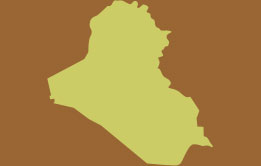Since the U.S.-led invasion in spring 2003, the most dangerous place in the world for journalists has been Iraq. Initially, the victims were primarily foreign correspondents, mostly from the U.S. and Western Europe, caught in the crossfire of the earliest phase of the war. Throughout 2004, however, an independent Iraqi media has become active, particularly in war-torn cities, such as Fallujah and Najaf, that are too dangerous for most foreign journalists.
The risks to journalists in Iraq are many, including U.S. and Iraqi gunfire; land mines, and suicide bombings; banditry and beatings by mobs. And dangers come from all sides. Journalists have complained of harassment, detention, and abuse by U.S. forces. Several have been abducted, and later released, by armed Iraqis. Public crowds in tense and volatile situations can turn on media workers in an instant.
In 2004, Iraqi insurgents have increasingly targeted journalists and their families, threatening, physically intimidating, and sometimes killing journalists, especially those perceived as working with U.S.-funded media outlets. Still, some journalists fear the U.S. forces most, particularly the guards and mobile military units that are quick to react, and possibly overreact, to any perceived threat. Hostility has grown recently between Iraqi and Arab journalists and U.S. forces and political leaders. Journalists accuse the U.S. military of violence and mistreatment, such as the detention and alleged torture of an al-Jazeera reporter. The U.S. military leadership counters with the claim that the responses of Arab journalists, including the tone and content of reporting, are evidence of Arab media collaboration with insurgents.
Meanwhile, as press advocacy organizations push for investigations of attacks on the press, the number of journalists and media workers killed in Iraq rises toward 40, with no sign of abating with the transition from U.S. to Iraqi governance.



